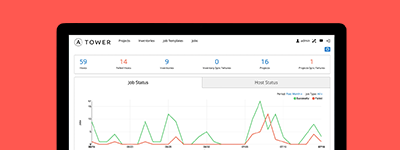django_manage - Manages a Django application.
Synopsis
Manages a Django application using the manage.py application frontend to django-admin. With the virtualenv parameter, all management commands will be executed by the given virtualenv installation.
Requirements (on host that executes module)
- virtualenv
- django
Options
| parameter | required | default | choices | comments |
|---|---|---|---|---|
| app_path |
yes | The path to the root of the Django application where manage.py lives. | ||
| apps |
no | A list of space-delimited apps to target. Used by the 'test' command. | ||
| cache_table |
no | The name of the table used for database-backed caching. Used by the 'createcachetable' command. | ||
| command |
yes |
|
The name of the Django management command to run. Built in commands are cleanup, collectstatic, flush, loaddata, migrate, runfcgi, syncdb, test, and validate. Other commands can be entered, but will fail if they're unknown to Django. Other commands that may prompt for user input should be run with the --noinput flag. | |
| database |
no | The database to target. Used by the 'createcachetable', 'flush', 'loaddata', and 'syncdb' commands. | ||
| failfast |
no | no |
|
Fail the command immediately if a test fails. Used by the 'test' command. |
| fixtures |
no | A space-delimited list of fixture file names to load in the database. Required by the 'loaddata' command. | ||
| link (added in 1.3) |
no | Will create links to the files instead of copying them, you can only use this parameter with 'collectstatic' command | ||
| merge (added in 1.3) |
no | Will run out-of-order or missing migrations as they are not rollback migrations, you can only use this parameter with 'migrate' command | ||
| pythonpath |
no | A directory to add to the Python path. Typically used to include the settings module if it is located external to the application directory. | ||
| settings |
no | The Python path to the application's settings module, such as 'myapp.settings'. | ||
| skip (added in 1.3) |
no | Will skip over out-of-order missing migrations, you can only use this parameter with migrate | ||
| virtualenv |
no | An optional path to a virtualenv installation to use while running the manage application. |
Examples
# Run cleanup on the application installed in 'django_dir'. - django_manage: command=cleanup app_path={{ django_dir }} # Load the initial_data fixture into the application - django_manage: command=loaddata app_path={{ django_dir }} fixtures={{ initial_data }} # Run syncdb on the application - django_manage: > command=syncdb app_path={{ django_dir }} settings={{ settings_app_name }} pythonpath={{ settings_dir }} virtualenv={{ virtualenv_dir }} # Run the SmokeTest test case from the main app. Useful for testing deploys. - django_manage: command=test app_path={{ django_dir }} apps=main.SmokeTest # Create an initial superuser. - django_manage: command="createsuperuser --noinput --username=admin --email=admin@example.com" app_path={{ django_dir }}
Notes
Note
virtualenv (http://www.virtualenv.org) must be installed on the remote host if the virtualenv parameter is specified.
Note
This module will create a virtualenv if the virtualenv parameter is specified and a virtualenv does not already exist at the given location.
Note
This module assumes English error messages for the ‘createcachetable’ command to detect table existence, unfortunately.
Note
To be able to use the migrate command with django versions < 1.7, you must have south installed and added as an app in your settings.
Note
To be able to use the collectstatic command, you must have enabled staticfiles in your settings.
Note
As of ansible 2.x, your manage.py application must be executable (rwxr-xr-x), and must have a valid shebang, i.e. “#!/usr/bin/env python”, for invoking the appropriate Python interpreter.
This is a Core Module
For more information on what this means please read Core Modules
For help in developing on modules, should you be so inclined, please read Community Information & Contributing, Helping Testing PRs and Developing Modules.


